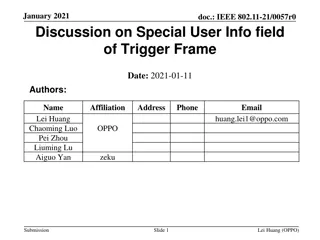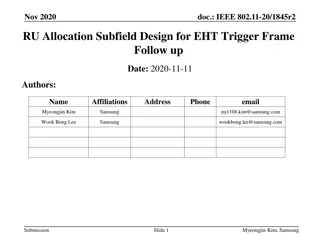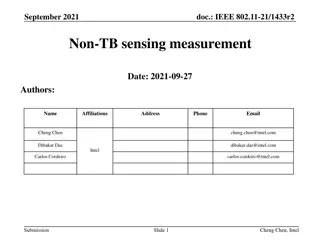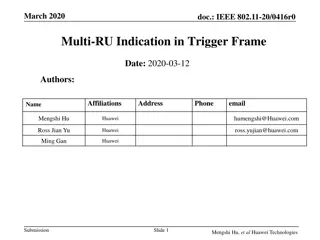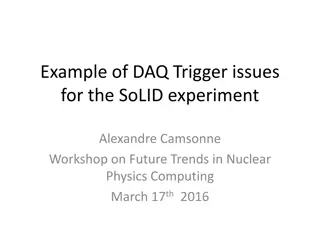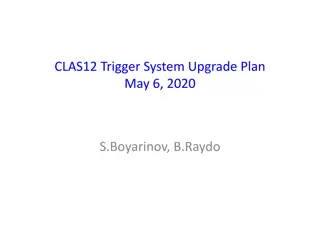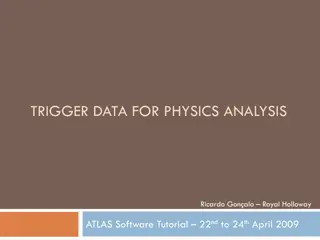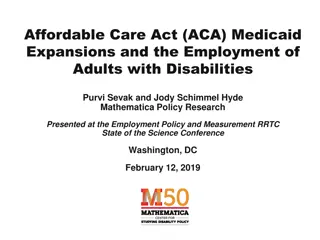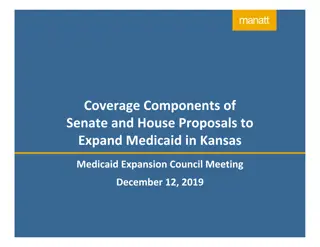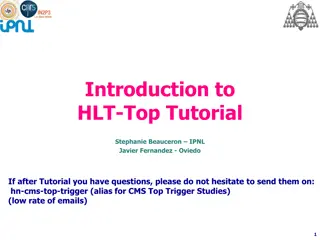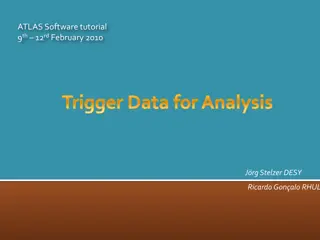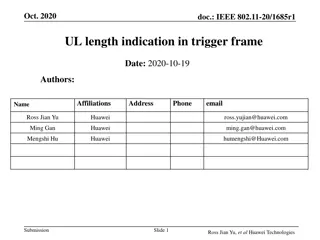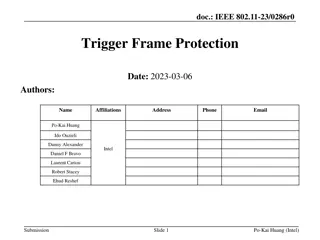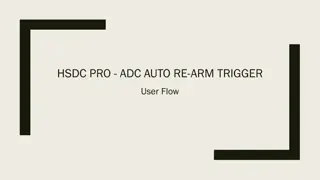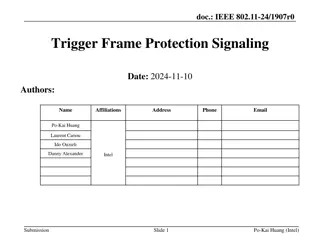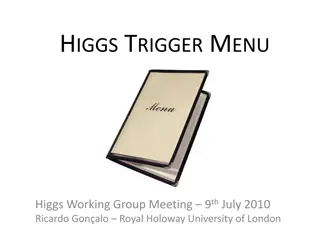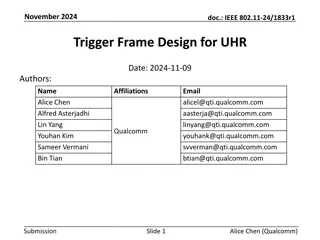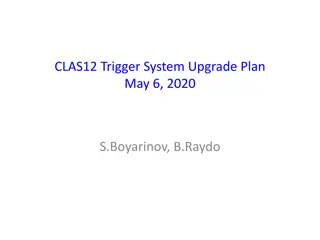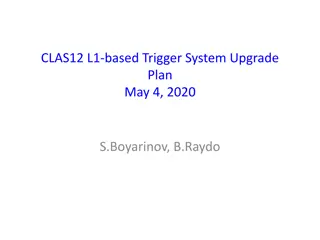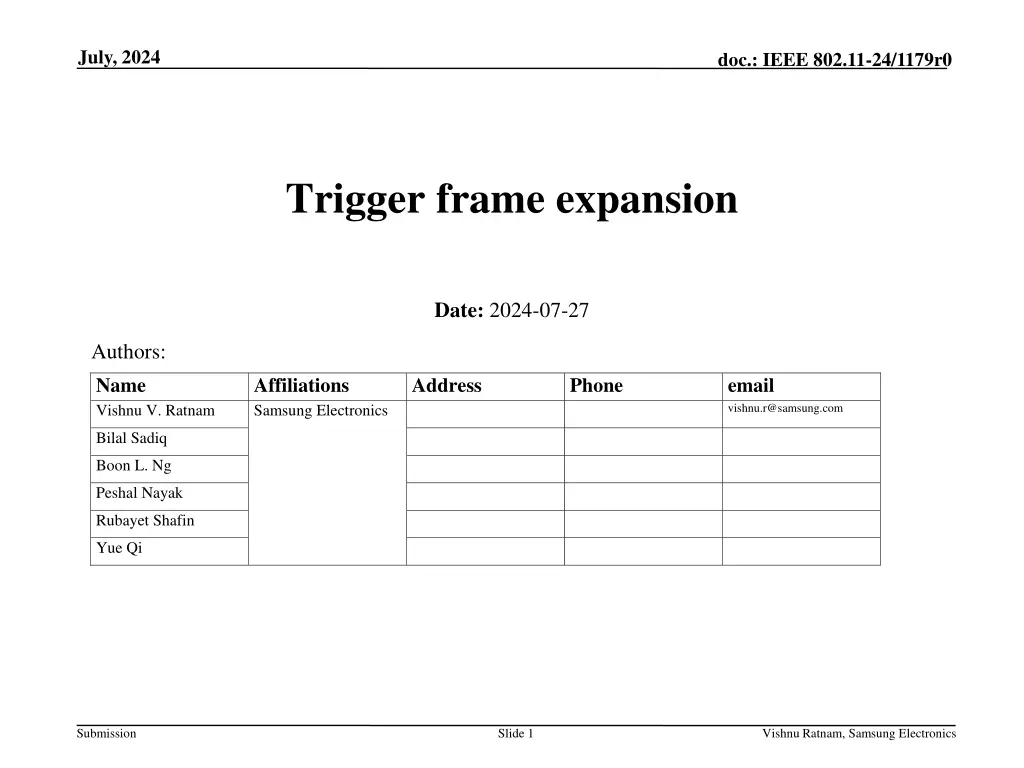
IEEE 802.11-24/1179r0 Trigger Frame Expansion in July 2024
This document discusses the expansion of Common Info and User Info fields in Trigger frames for additional information. It covers the proposed mechanisms, usage in UHR, existing issues, and proposals for addressing shortcomings related to Trigger frames in IEEE 802.11 in July 2024.
Download Presentation

Please find below an Image/Link to download the presentation.
The content on the website is provided AS IS for your information and personal use only. It may not be sold, licensed, or shared on other websites without obtaining consent from the author. If you encounter any issues during the download, it is possible that the publisher has removed the file from their server.
You are allowed to download the files provided on this website for personal or commercial use, subject to the condition that they are used lawfully. All files are the property of their respective owners.
The content on the website is provided AS IS for your information and personal use only. It may not be sold, licensed, or shared on other websites without obtaining consent from the author.
E N D
Presentation Transcript
July, 2024 doc.: IEEE 802.11-24/1179r0 Trigger frame expansion Date: 2024-07-27 Authors: Name Vishnu V. Ratnam Affiliations Samsung Electronics Address Phone email vishnu.r@samsung.com Bilal Sadiq Boon L. Ng Peshal Nayak Rubayet Shafin Yue Qi Submission Slide 1 Vishnu Ratnam, Samsung Electronics
July, 2024 doc.: IEEE 802.11-24/1179r0 Abstract This document proposes mechanism for expansion of the Common Info and User Info fields of Trigger frames, for carrying additional information. Submission Slide 2 Vishnu Ratnam, Samsung Electronics
July, 2024 doc.: IEEE 802.11-24/1179r0 Usage of Trigger frames in UHR Trigger frames are anticipated to be used extensively in 802.11bn. Several proposals have proposed the use of trigger frames for: Multi-AP coordination for obtaining cross-BSS CSI, buffer status, resource allocation etc [1-4]. Coexistence Indication [5,10] Initiating switch to higher capability state in DPS operation [6-7] Initiating DSO sub-band switch. [8-9] Initiating transmission on backup primary channel in NPCA [10] The focus has mainly been on the following types of trigger frames: MU-RTS, MU-RTS TXS, BSRP, BQRP and BFRP. Existing Trigger frame versions proposed to be re-used to maintain backward compatibility. Understandably, for enabling such new features, several additional fields will need to be defined for both the Common Info and User Info fields of Trigger frames in 802.11bn. Submission Slide 3 Vishnu Ratnam, Samsung Electronics
July, 2024 doc.: IEEE 802.11-24/1179r0 Issues with Common Info field Too few reserved bits remaining: For many Trigger frame variants (except for MU-RTS and MU-RTS TXS) there are too few reserved bits remaining in the Common Info field. Note: B22, B26, B53, B63, B56 B62 in EHT variant are reserved for backward compatibility. In 802.11be, a new Special User Info field (AID12=2007) was proposed for expansion of EHT variant Common Info, but also has only 3 reserved bits remaining. Common Info variant indication is complex: Current indication mechanism is not easy to expand to new Common Info variants. (similar issue to PPDU version identification) Common Info B54 Common Info B55 Non-AP STA type Common Info Interpretation Any Any HE HE 1 1 EHT HE Any 0 EHT EHT Submission Slide 4 Vishnu Ratnam, Samsung Electronics
July, 2024 doc.: IEEE 802.11-24/1179r0 Proposals for Common Info field Use last 3 remaining bits in Special User Info field (AID12=2007) to indicate Common Info Version (e.g. EHT, UHR, ). Similar idea as PHY Version Identifier in U-SIG. HE/EHT STAs shall interpret UHR Common Info field as the HE/EHT Common Info field. Additional common information can be carried in followup Special User Info fields. These fields can carry same AID12=2007 or can be assigned new AID12s (> 2007). There can be a unique mapping from Common Info Version to number of Special User Info fields. Alternatively, a Special User Info Count field or Special User Info Control field can be included to indicate number of Special User Info fields present. Additional common information carried here Submission Slide 5 Vishnu Ratnam, Samsung Electronics
July, 2024 doc.: IEEE 802.11-24/1179r0 Issues with User Info field Too few reserved bits remaining: For many Trigger frame variants (except for MU-RTS and MU-RTS TXS) there are too few reserved bits remaining in the User Info field. User Info variant indication is complex: Current indication mechanism is not easy to expand to new User Info variants. Submission Slide 6 Vishnu Ratnam, Samsung Electronics
July, 2024 doc.: IEEE 802.11-24/1179r0 Proposals for User Info field Additional user-specific information can be carried in follow-up User Info fields. All User Info fields for a STA shall carry same AID12 (determined by the recipient STAs AID). User Info Version field can be used to determine the version of the User Info field. There can be a unique mapping from User Info Version to the number of follow-up User Info fields. Alternatively, a User Info Count field can be included to indicate number of User Info fields present for a non-AP STA. Additional user-specific information carried here Submission Slide 7 Vishnu Ratnam, Samsung Electronics
July, 2024 doc.: IEEE 802.11-24/1179r0 Conclusion Trigger frames will play a critical role in many new features to be defined in 802.11bn. Most trigger frame versions have too few reserved fields for carrying additional indications required to support such a diverse set of features. The current mechanism for indicating the version of Common Info and User Info fields is also not amenable for expansion. Proposal 1: Follow up Special User Info fields (with AID12=2007 or new) can be used to carry additional common information and also indicate the Common Info version. Proposal 2: Follow up User Info fields (with same AID12) can be used to carry additional user specific information and also indicate User Info version. Submission Slide 8 Vishnu Ratnam, Samsung Electronics
July, 2024 doc.: IEEE 802.11-24/1179r0 References 1. 11-24-0512-00-00bn-considerations-for-coordinated-tdma.pptx 2. 11-24-0639-01-00bn-mac-protocol-aspects-of-multi-ap-coordination.pptx 3. 11-24-0716-04-00bn-buffer-status-report-in-multi-ap-follow-up.pptx 4. 11-24-1092-00-00bn-multi-ap-coordinated-concurrent-transmission- protocol.pptx 5. 11-24-1221-01-00bn-icf-icr-follow-up.pptx 6. 11-24-0451-00-00bn-ap-state-transitions-in-dps-mode.pptx 7. 11-24-1126-01-00bn-icf-icr-discussion-for-dps.pptx 8. 11-24-0299-01-00bn-initial-ctrl-frame-for-bw-switching-modes.pptx 9. 11-24-0517-00-00bn-preallocation-of-subband-for-dso-follow-up.pptx 10. 11-24-0504-01-00bn-considerations-of-a-unified-initial-control-frame- design.pptx Submission Slide 9 Vishnu Ratnam, Samsung Electronics
July, 2024 doc.: IEEE 802.11-24/1179r0 Straw polls SP 1: Do you agree to define mechanisms in 802.11bn for expanding the size of the fields for indicating common information and user-specific information in Trigger frames? Yes No Abstain Submission Slide 10 Vishnu Ratnam, Samsung Electronics
July, 2024 doc.: IEEE 802.11-24/1179r0 Straw polls SP 2: Do you agree to define mechanisms in 802.11bn for indicating the UHR (and beyond) versions of the Common Info and User Info fields in Trigger frames? Yes No Abstain Submission Slide 11 Vishnu Ratnam, Samsung Electronics
July, 2024 doc.: IEEE 802.11-24/1179r0 Backup slides Submission Slide 12 Vishnu Ratnam, Samsung Electronics

